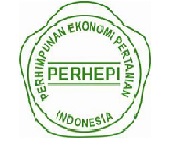Pemanfaatan Jerami Padi dan Arang Sekam sebagai Pupuk Organik dan Media Tanam dalam Budidaya Kedelai
Abstract
Composting of Rice Straw for Organic Fertilizer and Manufacturing Rice Husk Charcoal as Planting Medium in Soybean Demonstration Plot. Agricultural waste is the residue from an agricultural business activity, which if left unchecked can have a negative impact on the environment. Agricultural waste such as rice straw can be used for organic fertilizers because it has high potassium and lignin content. The purpose of this community service activity is to increase the knowledge and skills of the community and farmers about straw processing through the composting stage as organic fertilizer and burning rice husks into husk charcoal as a planting medium in soybean cultivation. Community service was carried out from July to August 2020 in Pengkok Village, Kedawung District, Sragen Regency, namely in the Subur and Sumber Agung farmer groups. Community service activities carried out are counseling or socialization of the use of straw and husk charcoal as organic fertilizer and planting media, then proceed with demonstrations or practices for making organic fertilizers and husk charcoal which are continued with planting soybeans in polybags with the application of compost and husk charcoal that have been made. The result of this service activity is that participants or farmer groups can make organic fertilizer from straw waste and husk charcoal independently and can be applied when cultivating soybeans in polybags as well as understanding the stages of making straw compost and burning husks into husk charcoal. The conclusion from the service activities that have been carried out is the understanding of the knowledge of community service participants about the methods or stages of composting in making organic fertilizer and making husk charcoal from rice husk waste for planting media as proven by farmers being able to make organic fertilizer from rice straw which initially becomes waste that is not optimal. used as compost which is made through the composting stage and the manufacture of husk charcoal using the burning method in a funnel and then applied in the soybean demonstration plot experiment in polybags.
Keywords
Full Text:
PDF (Bahasa Indonesia)References
Bachtiar, B., & Ahmad, A. H. (2019). Analisis Kandungan Hara Kompos Johar Cassia siamea Dengan Penambahan Aktivator Promi. BIOMA: JURNAL BIOLOGI MAKASSAR, 4(1), 68-76. https://journal.unhas.ac.id/index.php/bioma/article/view/6493
Jusoh, M. L. C., Manaf, L. A., & Latiff, P. A. (2013). Composting of rice straw with effective microorganisms (EM) and its influence on compost quality. Iranian Journal of Environmental Health Science & Engineering, 10(1), 17. https://doi.org/10.1186/1735-2746-10-17
Marlina, N., & Rusnandi, D. (2005). Teknik Alimatisasi bibit anthurium pada beberapa media tanam. Buletin Teknik Pertanian, 12(1), 38-40.
Nopriyanti, A., Siregar, C., & Mindalisma, M. (2020). uji pemberian bahan organik terhadap beberapa varietas tanaman kedelai (Glycine max L. Merril) pada tanah Sub soil inceptisol Kwala Bekala Sumatera Utara. Agriland: Jurnal Ilmu Pertanian, 8(2), 158-164.
Nurlisan, N., Rasyad, A., & Yoseva, S. (2014). Pengaruh pemberian pupuk organik terhadap pertumbuhan dan hasil tanaman kedelai (Glycine max (L.) Merril). Jurnal Online Mahasiswa (JOM) Bidang Pertanian, 1(1). https://jom.unri.ac.id/index.php/JOMFAPERTA/article/view/2666
Setiawan, F. (2021). Kandungan dan Manfaat Tersembunyi dari Arang Sekam. Dinas Pertanian, Pangan, Perikanan Bangka Selatan. https://dppp.bangkaselatankab.go.id/post/detail/964-kandungan-dan-manfaat-tersembunyi-dari-arang-sekam
Setyorini, D., Saraswati, R., & Anwar, E. K. (2006). Kompos. In D. A. Suriadikarta & R. D. M. Simanungkalit (Eds.), Pupuk organik dan pupuk hayati Balai Besar Penelitian dan Pengembangan Sumberdaya Lahan Pertanian. https://balittanah.litbang.pertanian.go.id/ind/index.php/publikasi-mainmenu-78/buku-mainmenu-85/848-org
Sholeh, M. S., & Ringgih, D. (2017). Efektivitas Pemupukan Terhadap Produktivitas Tanaman Padi pasa Lahan Marginal di Kecamatan Pademawu Kabupaten Pamekasan. Agrovigor: Jurnal Agroekoteknologi, 10(2), 133-138. https://doi.org/10.21107/agrovigor.v10i2.3172
Soemeinaboedhy, I. N., & Tejowulan, R. S. (2007). Pemanfaatan berbagai macam arang sebagai sumber unsur hara P dan K serta sebagai pembenah tanah. Agroteksos, 17(2), 114-122.
Sulmiyati, S., & Said, N. S. (2017). Pengolahan Briket Bio-Arang Berbahan Dasar Kotoran Kambing dan Cangkang Kemiri di Desa Galung Lombok Kecamatan Tinambung, Polewali Mandar [Bio-charcoal briquettes; Goats; Hazelnut shells; Galung Lombok]. 2017, 3(1), 10. https://doi.org/10.22146/jpkm.25529
Supriyanto, S., & Fiona, F. (2010). Pemanfaatan arang sekam untuk memperbaiki pertumbuhan semai jabon (Anthocephalus cadamba (Roxb.) Miq) pada media subsoil. Jurnal Silvikultur Tropika, 1(1). https://journal.ipb.ac.id/index.php/jsilvik/article/view/4134
Surdianto, Y., Sutrisna, N., Basuno, & Solihin. (2015). Panduan teknis cara membuat arang sekam Padi. Balai Pengkajian Teknologi Pertanian (BPTP) Jawa Barat.
Suwatanti, E., & Widiyaningrum, P. (2017). Pemanfaatan MOL limbah sayur pada proses pembuatan kompos. Indonesian Journal of Mathematics and Natural Sciences, 40(1), 1-6. https://journal.unnes.ac.id/nju/index.php/JM/article/view/12455
Tadjudin, E., Trisnaningsih, U., & Subagja, J. (2019). Pengaruh Pemberian Pupuk Kompos Pada Tiga Varietas Kedelai (Glycine max L. Merril) Terhadap Pertumbuhan Dan Hasil Tanaman. Agroswagati Jurnal Agronomi, 6(2). http://jurnal.ugj.ac.id/index.php/Agroswagati/article/view/1973
Yudiono, K. (2020). Peningkatan daya saing kedelai lokal terhadap kedelai impor sebagai bahan baku tempe melalui pemetaan fisiko-kimia. Agrointek, 14(1), 57-66. https://doi.org/10.21107/agrointek.v14i1.6311
DOI: https://doi.org/10.20961/prima.v5i2.44766
Refbacks
- There are currently no refbacks.
View My Stats

This work is licensed under a Creative Commons Attribution-ShareAlike 4.0 International License.


.jpg)



1.jpg)











